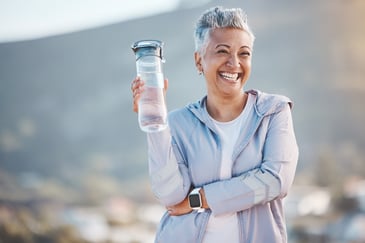 Beginning in the early stages of life, everyone is told to drink water, water, and more water. With everyone instructing individuals to consume more water, what are some methods to increase our water intake? Staying hydrated is vital for the human body to continue to perform activities that we wish to engage in. The human body is roughly fifty percent water, which may emphasize the instruction to consume more water even more than before. We are going to discuss three tips to increase the overall consumption of water so that everyone can reach their desired goals. I encourage you to implement one of the three tips and analyze whether your daily water intake increased. To determine that optimal amount of water your body may need daily, reach out to your primary physician for guidance.
Beginning in the early stages of life, everyone is told to drink water, water, and more water. With everyone instructing individuals to consume more water, what are some methods to increase our water intake? Staying hydrated is vital for the human body to continue to perform activities that we wish to engage in. The human body is roughly fifty percent water, which may emphasize the instruction to consume more water even more than before. We are going to discuss three tips to increase the overall consumption of water so that everyone can reach their desired goals. I encourage you to implement one of the three tips and analyze whether your daily water intake increased. To determine that optimal amount of water your body may need daily, reach out to your primary physician for guidance.
Three tips that may help in increasing water consumption:
- Flavored Water – Drinking plain water on a consistent basis may result in an individual getting “bored” of drinking water. A fantastic method to increasing water intake may be to invest in flavored water. Depending on the individual, the individual may want to change the flavor of water they consume daily or even weekly. This is a method to keep your choice of water nice and fresh to stay consistent. As an example, an induvial may desire to consume “grape” flavored water one week and then the next week, they may want to consume “lemon” flavored water.
- Utilizing a Labeled Water Bottle – Water bottles made via certain companies include reminders on the side of bottles regarding the time of the day. As an individual consumes water, the bottle will have the next time slot with the recommended amount of water to have consumed by that time in the day. As an example, one water bottles with labeling may encourage an individual to consume 16 ounces of water by 9:00 AM. This method has become popular for many individuals as the importance of water intake continues to grow across the nation.
- Reminders – Utilizing technology in the form of smart phones or smart computers, an individual has the capability to set electronic reminders throughout the day to consume water. This is an alternative method available in the event an individual does not have a labeled water bottle as previously discussed. With this method, individuals also have the capacity to set the amount of water to consume daily at their own desired pace throughout the day. This method is perfect for individuals who want to be in complete control regarding the management of their water intake.
Which of the three tips will you continue to practice, add, or share with a friend? Let’s all stay hydrated together!


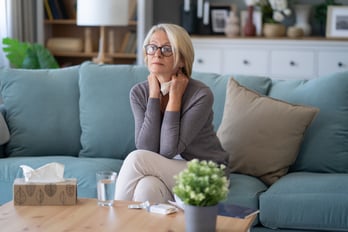 Imagine a full exercise class, residents upbeat and ready to start, a packed schedule of personal training clients, or hallway conversations about how good the residents feel after exercising. I say imagine because during the cold months, these things aren’t always a reality.
Imagine a full exercise class, residents upbeat and ready to start, a packed schedule of personal training clients, or hallway conversations about how good the residents feel after exercising. I say imagine because during the cold months, these things aren’t always a reality..png?width=315&height=315&name=2024%20PUMP%20IT%20SOCIAL%20(6).png) The National Institute for Fitness and Sport (NIFS) has partnered with NuStep to host a free event on World Parkinson’s Day, Thursday, April 11, 2024, to raise awareness on the benefits of exercise for those fighting back against Parkinson’s. We have a big goal of achieving 10 million steps on the NuStep to honor the 10 million people living with Parkinson’s worldwide.
The National Institute for Fitness and Sport (NIFS) has partnered with NuStep to host a free event on World Parkinson’s Day, Thursday, April 11, 2024, to raise awareness on the benefits of exercise for those fighting back against Parkinson’s. We have a big goal of achieving 10 million steps on the NuStep to honor the 10 million people living with Parkinson’s worldwide.
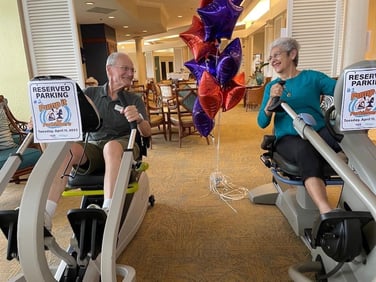 Last year, the only complaint we heard about Pump it for Parkinson’s was several communities heard about it too late and missed out on the fun!
Last year, the only complaint we heard about Pump it for Parkinson’s was several communities heard about it too late and missed out on the fun! 
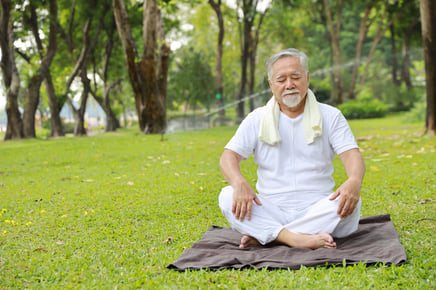 It has often been thought that core strength can only to be achieved through sit ups, crunches, and planks but in recent years there has been a lot more discussion about the way we breathe and how it effects our core. If you participate in 1-1 training or group fitness, you have probably heard your trainer tell you to breathe and brace your core through a particular exercise. What does it mean to effectively brace your core and why is it important? Is it to see your abdominals, provide you strength or to help with your posture? In all reality, we use our core for many daily tasks such as standing tall, getting up off a chair, or even walking. Learning how to brace your core is fundamental in creating a strong foundation for all movements and can also help to aide in injury prevention.
It has often been thought that core strength can only to be achieved through sit ups, crunches, and planks but in recent years there has been a lot more discussion about the way we breathe and how it effects our core. If you participate in 1-1 training or group fitness, you have probably heard your trainer tell you to breathe and brace your core through a particular exercise. What does it mean to effectively brace your core and why is it important? Is it to see your abdominals, provide you strength or to help with your posture? In all reality, we use our core for many daily tasks such as standing tall, getting up off a chair, or even walking. Learning how to brace your core is fundamental in creating a strong foundation for all movements and can also help to aide in injury prevention.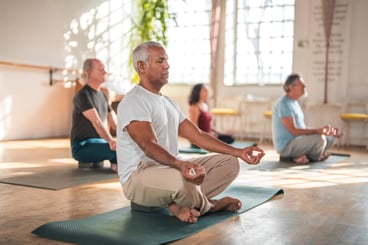 Acute and chronic pain is something almost everyone must deal with in their lifetime whether it is from an injury, overuse, or a degenerative condition such as arthritis. This consideration becomes much more common as exercisers move into the active aging portion of their fitness journey. Meditation in various forms has been shown to provide relief in both acute and chronic situations and in many cases may increase an exerciser’s overall pain tolerance. Techniques that correlate well with pain management are mindfulness meditation, body scans, visualization, guided meditation, and progressive muscle relaxation.
Acute and chronic pain is something almost everyone must deal with in their lifetime whether it is from an injury, overuse, or a degenerative condition such as arthritis. This consideration becomes much more common as exercisers move into the active aging portion of their fitness journey. Meditation in various forms has been shown to provide relief in both acute and chronic situations and in many cases may increase an exerciser’s overall pain tolerance. Techniques that correlate well with pain management are mindfulness meditation, body scans, visualization, guided meditation, and progressive muscle relaxation.
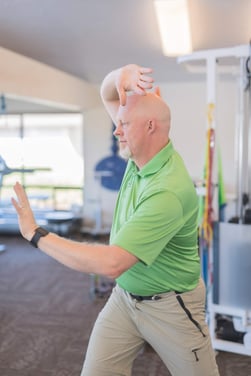 It’s not uncommon for people to describe uncomfortable physical sensations; musculoskeletal discomfort has become increasingly common. If you think about the average office worker, they will likely talk about pain in the neck, upper traps, and shoulders. Why these specific areas? When people are stressed, they have a tendency to hunch over and round the upper back. This tightens the aforementioned muscles, causing irritation. Trauma and chronic stress can have a lingering impact on our bodies; the body can unconsciously tense up, causing chronic pain.
It’s not uncommon for people to describe uncomfortable physical sensations; musculoskeletal discomfort has become increasingly common. If you think about the average office worker, they will likely talk about pain in the neck, upper traps, and shoulders. Why these specific areas? When people are stressed, they have a tendency to hunch over and round the upper back. This tightens the aforementioned muscles, causing irritation. Trauma and chronic stress can have a lingering impact on our bodies; the body can unconsciously tense up, causing chronic pain. 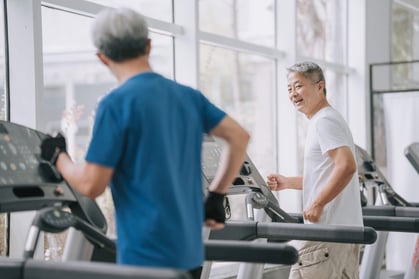 Congratulations! You’ve decided to get started with your fitness journey! Now what?
Congratulations! You’ve decided to get started with your fitness journey! Now what?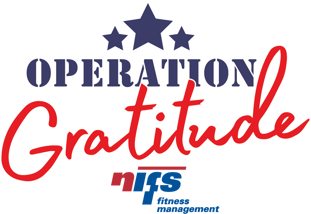 We know that practicing gratitude can have profound effects on our health and wellbeing, but in our fast-paced lives, it’s easy to brush off and overlook all of the good around us. Because of this, NIFS staff across the country took the month of November, in the spirit of Thanksgiving, to give thanks and practice gratitude with their residents through our own Operation Gratitude program. Some of the popular offerings and events included a month-long self-care calendar,
We know that practicing gratitude can have profound effects on our health and wellbeing, but in our fast-paced lives, it’s easy to brush off and overlook all of the good around us. Because of this, NIFS staff across the country took the month of November, in the spirit of Thanksgiving, to give thanks and practice gratitude with their residents through our own Operation Gratitude program. Some of the popular offerings and events included a month-long self-care calendar, 
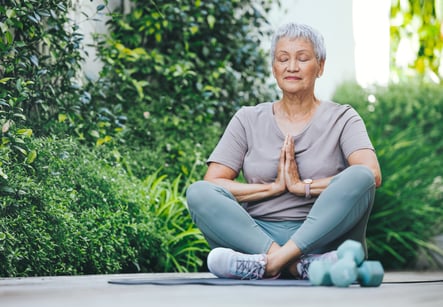 While most of us enjoy the hustle and bustle that comes with the season, we might find our lives accumulating stress. Sometimes we feel stress in the moment and sometimes it isn’t until the holidays have ended, and we feel the exhaustion set in. Thankfully in many senior living communities across the country, exercise and fitness professionals are including techniques in their group fitness or 1-1 programming that can be used to help with relaxation. Consider adding these in as part of your routine this season if holiday stress starts to wear you down!
While most of us enjoy the hustle and bustle that comes with the season, we might find our lives accumulating stress. Sometimes we feel stress in the moment and sometimes it isn’t until the holidays have ended, and we feel the exhaustion set in. Thankfully in many senior living communities across the country, exercise and fitness professionals are including techniques in their group fitness or 1-1 programming that can be used to help with relaxation. Consider adding these in as part of your routine this season if holiday stress starts to wear you down!